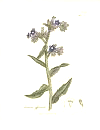Cocoa butter family: Various types of cocoa trees
Similar to coffee beans that have different varieties, there are varied types of cocoa trees that produce the pods holding the cocoa beans. Each of these pods have different characteristics and this determines the flavor and quality of chocolates made using cocoa butter. To understand what quality of cocoa butter makes a difference in chocolate making, you need to know the different kinds of trees that produce cocoa beans.

Major varieties of cocoa trees:
Criollo (1-5 percent of production): The finest chocolates are always made from Criollo cocoa. Criollo is derived from Creole which means native, authentic and indigenous. Criollo grows in very small numbers in Mexico, Nicaragua and Guatemala. Criollo can also be found in Venezuela, Columbia and some Caribbean islands including Trinidad, Jamaica and Grenada but in a virtuous and more restricted form. Criollo also has its presence spread on the islands of the Indian Ocean such as Java, Madagascar and the Comoros.
Characteristics of cocoa butter made from Criollo:
- It has a slightly bitter taste but it is pleasant
- It adds aroma along with fortitude and delight
- It has a mild astringent property and is low in tanning
- It is pale in color and gives a reddish tinge to the chocolate
- It grants a fine flavor which can be compared to that of the arabica coffee
Forastero (80-90 percent of production): Forastero means a ‘foreigner’ or ‘stranger’. Forastero has its origin in the upper Amazon region. It grows in several South American countries including Peru, Ecuador, Colombia, Brazil, Guyana, French Guyana and in Southern Venezuela near the Orinoco. It is also found in West Africa, Ivory Coast, Ghana, Cameroon, Sao Tome and in South-East Asia.
Features of cocoa from Forastero:
- It is very bitter
- It is tannic, astringent and overpowering with their strong aromatic power
- It offers a restricted range of flavors and are compared to robusta coffee
Trinitario (10-15 percent of production): Trinitario is an outcome of the cross of Criollo and Forastero made in the eighteenth century when there was an environmental disaster. It has taken the name from its origin – the island of Trinidad. They are spread from the island of Trinidad off the coast of Venezuela. They are grown in almost all the regions where Criollo is found. They are found in the islands of Lesser Antilles and Trinidad. Jave, Papua-New-Guinea, Sri Lanka and Cameroon are also contributing to the Trinitario population.
Features of Trinitario: As it is a cross between Criollo and Forastero, it possesses the characteristics that are common in both the varieties and it is very famous for it’s strong aroma.
Mavericks: Mavericks are grown in South America and they cannot be related or classified with the three main varieties of cocoa trees. They are less popular than the three major varieties. The most significant of these is Ecuador’s ‘national’ cocoa tree. It is well known for its large, green, wrinkled pods with large purple beans. The least popular variety is the Forastero cocoa tree of Surinam.
Features of Mavericks:
- The Ecuador’s ‘national’ cocoa is also known as ‘Arriba’
- Arriba is highly aromatic
- This is very tannic than Criollo and has a darker color
These are all the members of the cocoa tree family from where delicious cocoa butter is extracted. One tasty chocolate that we consume holds the perspiring labor of a millions of farmers, chocolatiers, helpers, traders and many more. Let us thank them all from the next time we yummy eat chocolates!
Comments Off on Cocoa butter family: Various types of cocoa trees







